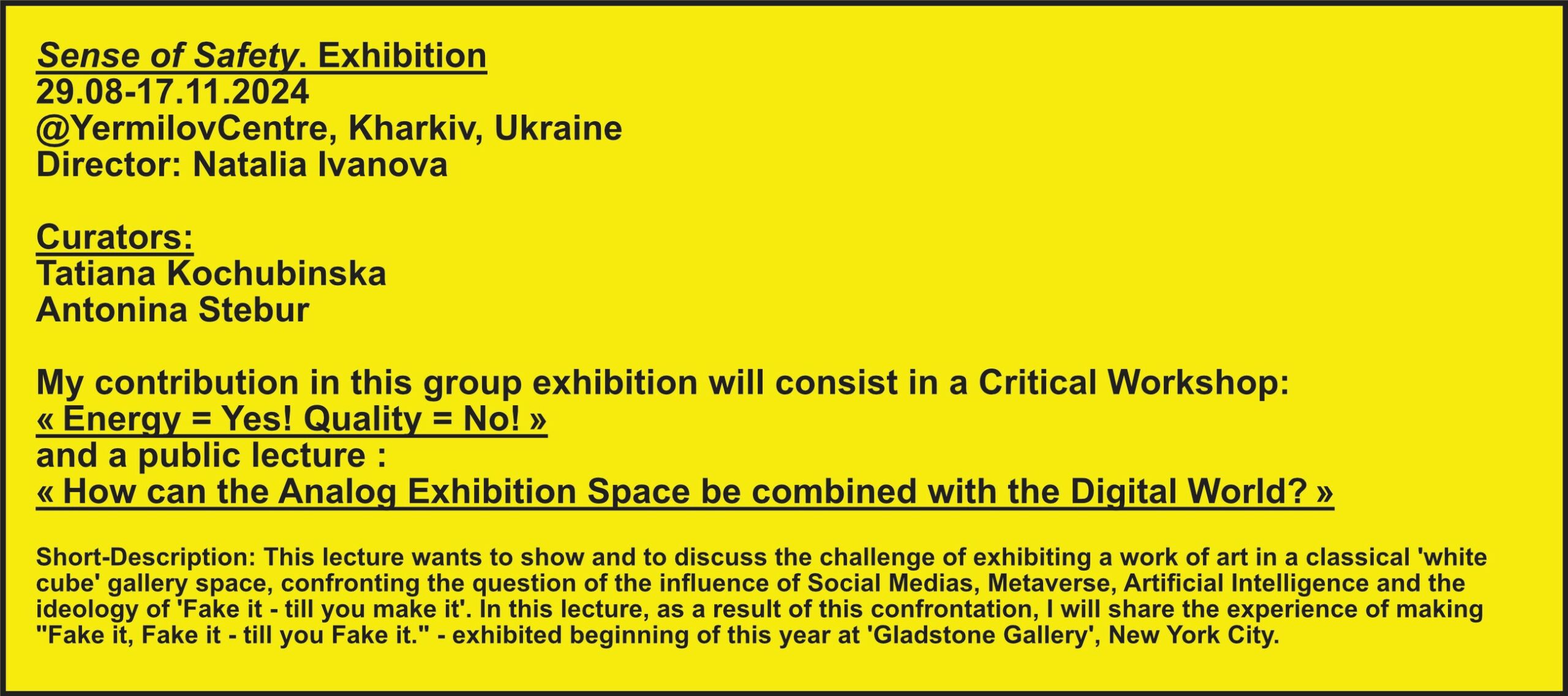“Energy = Yes! Quality = No!” Workshop, 2024
The “Art = Shelter” in Kharkiv
Art is what makes me travel, my work of Art is what only makes me travel. Therefore, when I was invited to be part of the group exhibition “Sense of Safety” at the Yermilov Centre in Kharkiv, I thought this was a chance to travel to Ukraine and see for myself what it means to be living in a country at war. It was an opportunity for improving my ideas of “Energy = Yes! Quality = No!” with a small workshop, same-named, in order to test its viability for participants in a city under constant shelling. My decision to travel to Kharkiv and stay for 3 nights is a modest contribution of solidarity and support to the artists there in difficult times. I wanted to find out how a state of war changes the production, but also the perception of art in the eyes of artists, and of spectators.
I think I got some first answers to these problematics: To travel via Warsaw, continue my journey by train via Chelm, then Kiev and arrive in Kharkiv was already an experience. I noticed how full the trains are – mostly with women and children, which struck me but is of course obvious – and especially how normally and punctually the trip went (coming here and back). My journey was facilitated by the meetings with Taras Gembik in Warsaw, by the fact that I travelled from Kiev to Kharkiv with Anna Zvyagintseva and that on my way back Sasha Kurmaz attended me and showed me parts of Kiev.
Once in Kharkiv what astonished me was the quietness and cleanness (the greenery in the parks and gardens are kept mowed and watered) especially in the city center (Saturday evening when passing through one of the gardens I saw a lot of people, families, lovers, and weddings). I remarked the relative absence of people on the streets, but still quite a busy traffic of individual cars – with no less Porsche, Audi and other Mercedes cars than elsewhere. Subways and trams are free and well used. It was important for me to check that travelling by train to Kharkiv is easily possible, that renting a room there with all the comfort we know today, is possible. It was also important to make the real but strange experience of this ‘normal’ life in Kharkiv or this ‘normal’ life played with talent – and how close we come to our ‘normal’ lives if we can understand it as a game. But it is not a play, it’s about death or life at every moment, and it can be ‘Game Over’ each time.
When on the streets, looking up, I saw how the damage after each shelling – since more than two years now – is carefully cleaned and precariously repaired. Traces of missile impacts in the city center are numerous and I saw innumerable wood-boarded windows in place of windows that had been blasted in the city. At night after 10pm the city is very dark (the curfew is in effect from 11pm to 6am) and strangely enough, stars can be seen in the sky (the night of the opening of “Sense of Safety” I saw the bright lights of a defense missile in the sky suddenly interrupted in its progression – like a falling star.) It is a strange atmosphere in its normality – with its ‘pushed normality’ on the one hand (the fancy coffeeshop with latte macchiato and its drawn heart on the cream topping, and young and beautiful people – you can find this everywhere so why not in Kharkiv), and on the other hand the knowledge that each second could be your last, or your close by or a bit farther neighbor’s, because the often sounding alarms are too close to the border, preventing to take shelter.
So, the only reaction people have in Kharkiv when the alarm goes on, is to check the type of alarm on their I-phones and its eventual immediate consequences. Another strange feeling is walking home in the middle of the city after 10pm when the lights are switched off and you have one hour left to get back to your place with the help of your cell-phone light before the 23pm curfew. I felt the immediacy and cruelty of sudden death the day after the opening, when up to ten people died and a hundred were injured after a heavy Russian shelling of missiles, and among those killed was a young artist from Kharkiv, already known in the city’s ‘artworld’, who had come to our opening at Yermilov Centre the previous day. I felt how this affected the team of the exhibition space. Yermilov Centre is in fact an “ART = SHELTER”, it is the real Art shelter. It is a shelter for and by art. And in being this, it is shelter (it belongs to the university and is open daily from 12am to 8pm except Monday) for people, for people interested in art and beyond this, for everyone.
I could measure this at the moment of my departure back to Kiev in its particularity: That day – after the last session of my workshop, we met at Yermilov Center which was already crowded with visitors. After an alarm sounded around noon that Sunday morning, at least 4 explosions were heard and the I-phone information signified that the shelling was not far. While we waited a bit longer before heading to the railway-station by car, I suddenly realized that a lot of people were inside the gallery-space, visitors of the exhibition looking at the artworks with others coming from outside to take shelter, and others not leaving the exhibition-space for a while – as one can wait for a rain shower to stop. The Yermilov Centre is the REAL Art-Shelter. The work that Yermilov Centre is doing is so essential for the public and so crucial in such times. It is a lighthouse of hope. I have deep respect for the director and Kharkiv-resident Natalia Ivanova. Respect and Love for her work, for her own original initiative to have turned a discotheque into an art center years ago, for her resilience to stay active and open in Kharkiv when the full-size-invasion started, for the grace she provoked in moments when the art center switched to a real shelter, for her faith in art and her role as an anchor of future, and her conviction in the absolute need of art in times of war.
During the 4 sessions of my “Energy = Yes! Quality = No!” workshop I measured how difficult it is in times of war, death, destruction and fear to stay CRITICAL, to stay critical of our own work but also of the work of others in the same situation as our own. I could also measure how important it is to stay critical because obviously, ‘to be critical’ is one of the ‘collateral victims’ of war-time. Therefore, the CRITICAL SPIRIT is something to absolutely maintain and keep functioning. The Critical Spirit has to be cherished and protected urgently in such times. I experienced and verified during my short journey, that there is no better tool than ART for doing so, through permanent discussion about Art’s destination, function, and its mystery that will help us.
The charged, dense and thoughtful exhibition “Sense of Safety” at Yermilov Centre establishes – in its astonishing ‘floating’ form – a serious proposition for staying critical. I am happy and proud to take part in this group exhibition and I am satisfied that I could, in and with my workshop, take part in this statement for criticality, but also get a critical-feedback myself, on and with my work. My workshop was not a success because after a first session with 17 participants only 5, 7 and 8 people came back for the following 3 sessions. I was told that the reason was the shelling in Kharkiv that happened during the first session, but I think that maybe the feedback from the first session, certainly exchanged between participants, didn’t encourage others to show-up for the next sessions. Nevertheless, the workshop was not a failure because during these last 3 sessions we could judge incredible and surprising contributions. The public lecture I gave at Yermilov Centre about the thematic: “How to combine the analog exhibition space with the digital world” was very well attended and raised a lot of questions from the audience at the end of the lecture, to which I tried to answer with clarity. It was a good moment.
Lastly, I want to mention here – and I am doing it deliberately off-the-cuff, here and now in Kiev in my hotel room just a couple of hours after we were awakened by a loudspeaker in our rooms, warning us of a coming missile attack, and heard a series of explosions 10-15 minutes later – how much sharing a passion, in my case the passion ART, can help people overcome fear. I have fear to be killed or harmed – in a kind of Russian roulette – like everybody, a bit less or a bit more, but clearly not under the dictatorship of fear: To know that I am here in this situation first of all NOT ALONE and second BECAUSE I have a MISSION, makes the difference. Thanks to my travel to Kharkiv – which was so thoughtfully organized by the curatorial team, by Tatiana Kochubinska and by Antonina Stebur for my assistance – I understood that, what removes the dictatorship of fear is the human, its passions, and in my case the passion for ART. Therefore: The Human and its Passion is the Shelter!
Thomas Hirschhorn, September 2. 2024

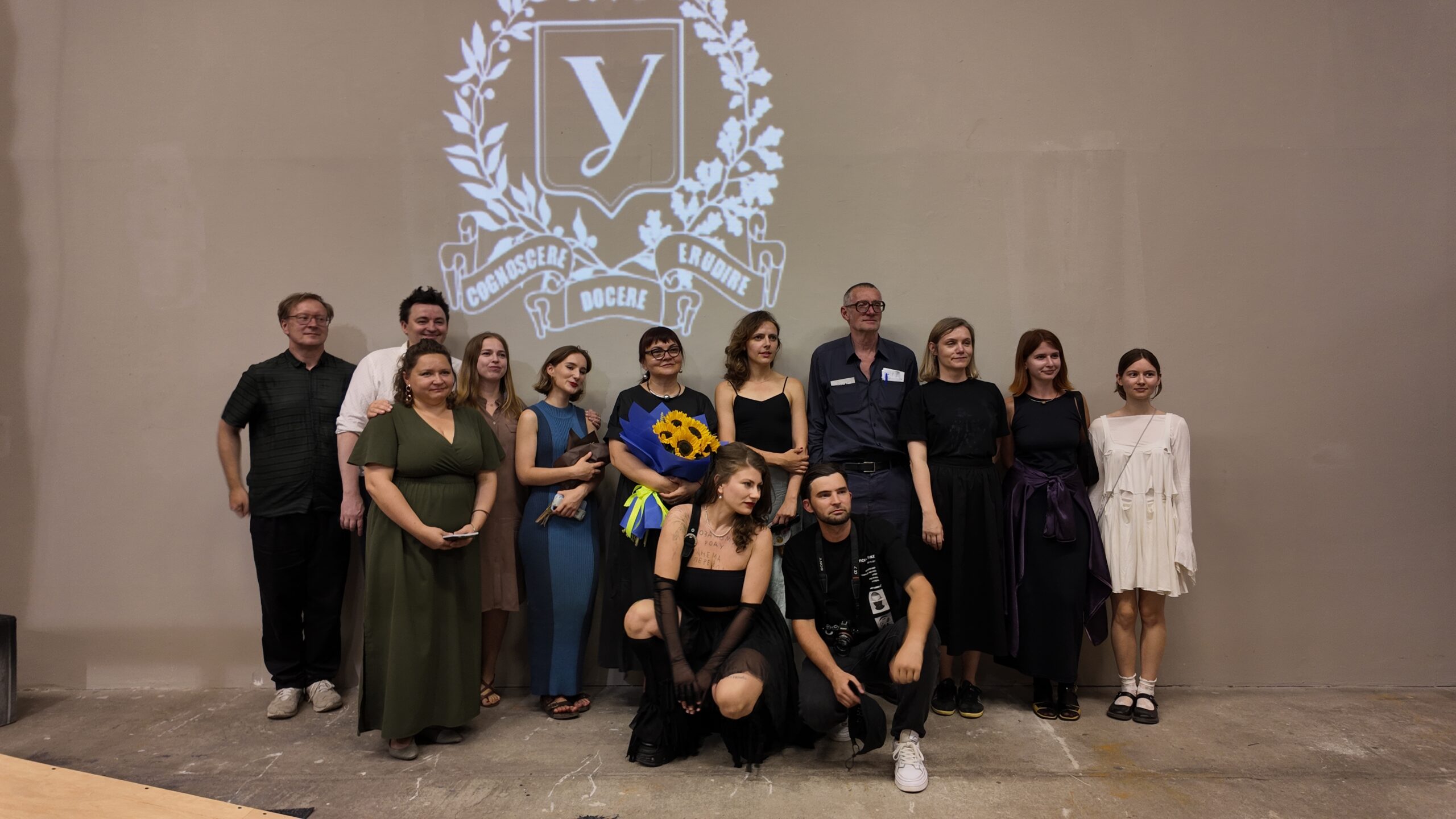
Opening of the exhibition “Sense of Safety”, Yermilov Centre, Kharkiv
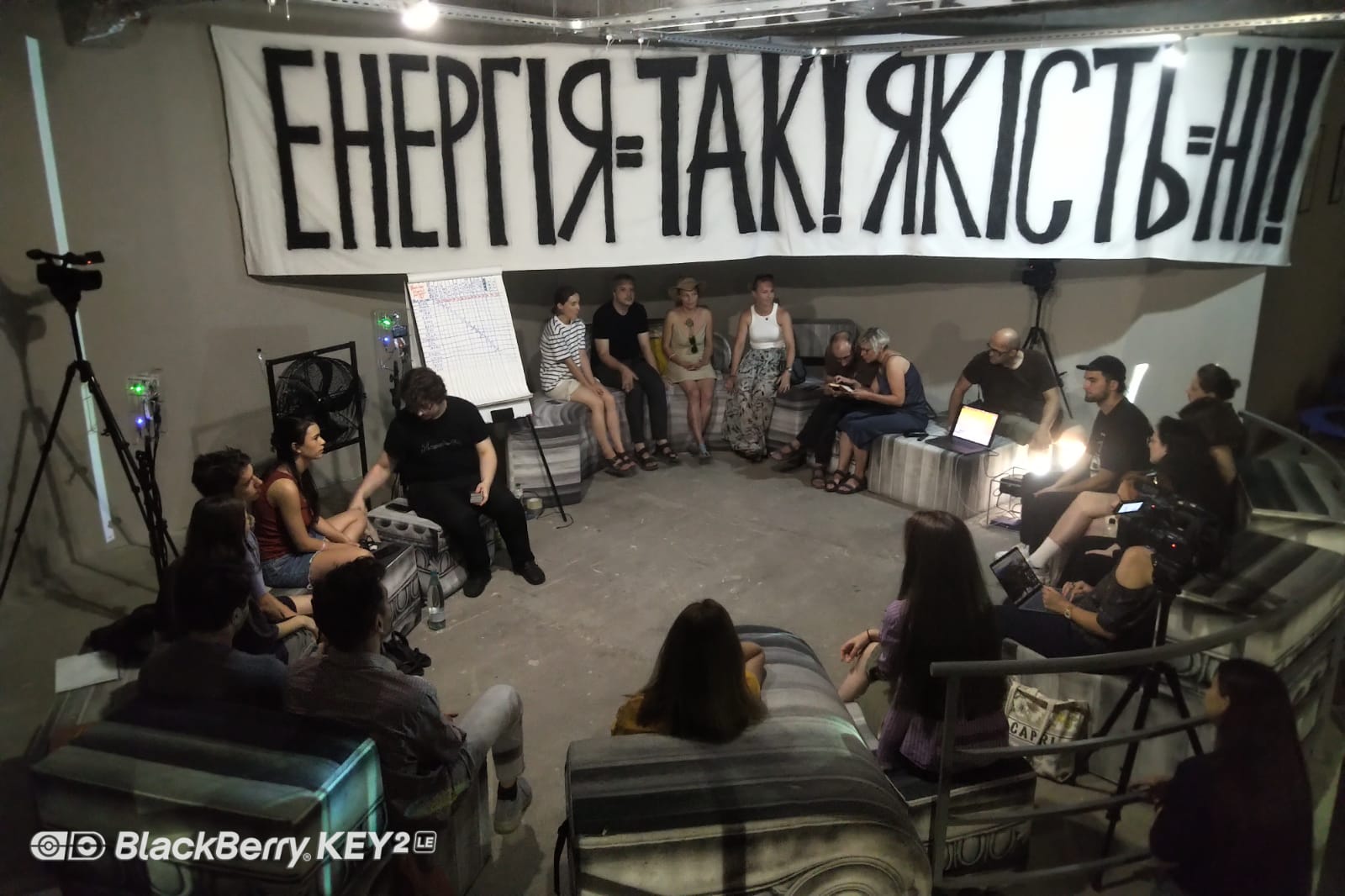
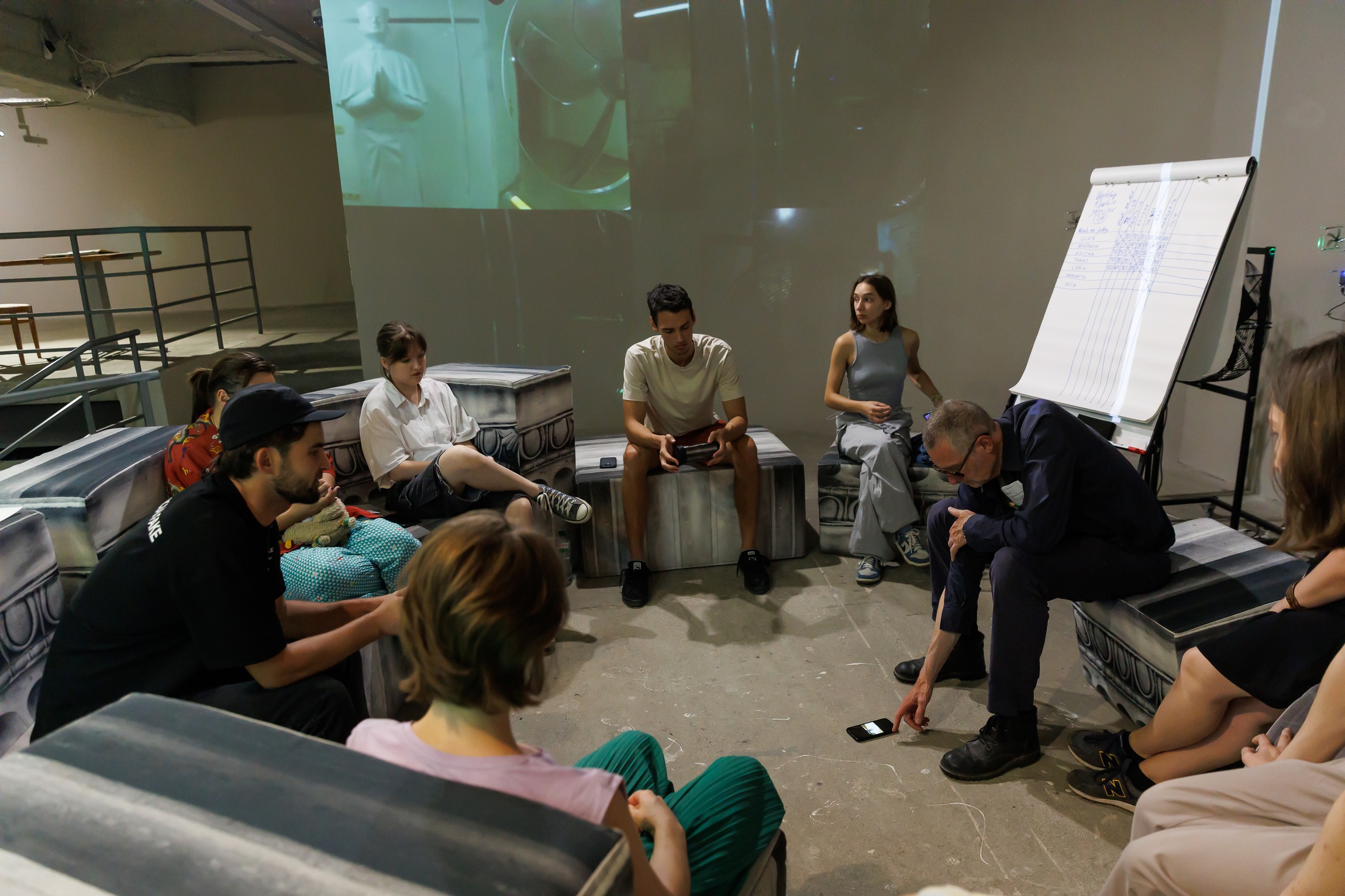
“Energy = Yes! Quality = No!”, Critical Workshop at Yermilov Center, Kharkiv
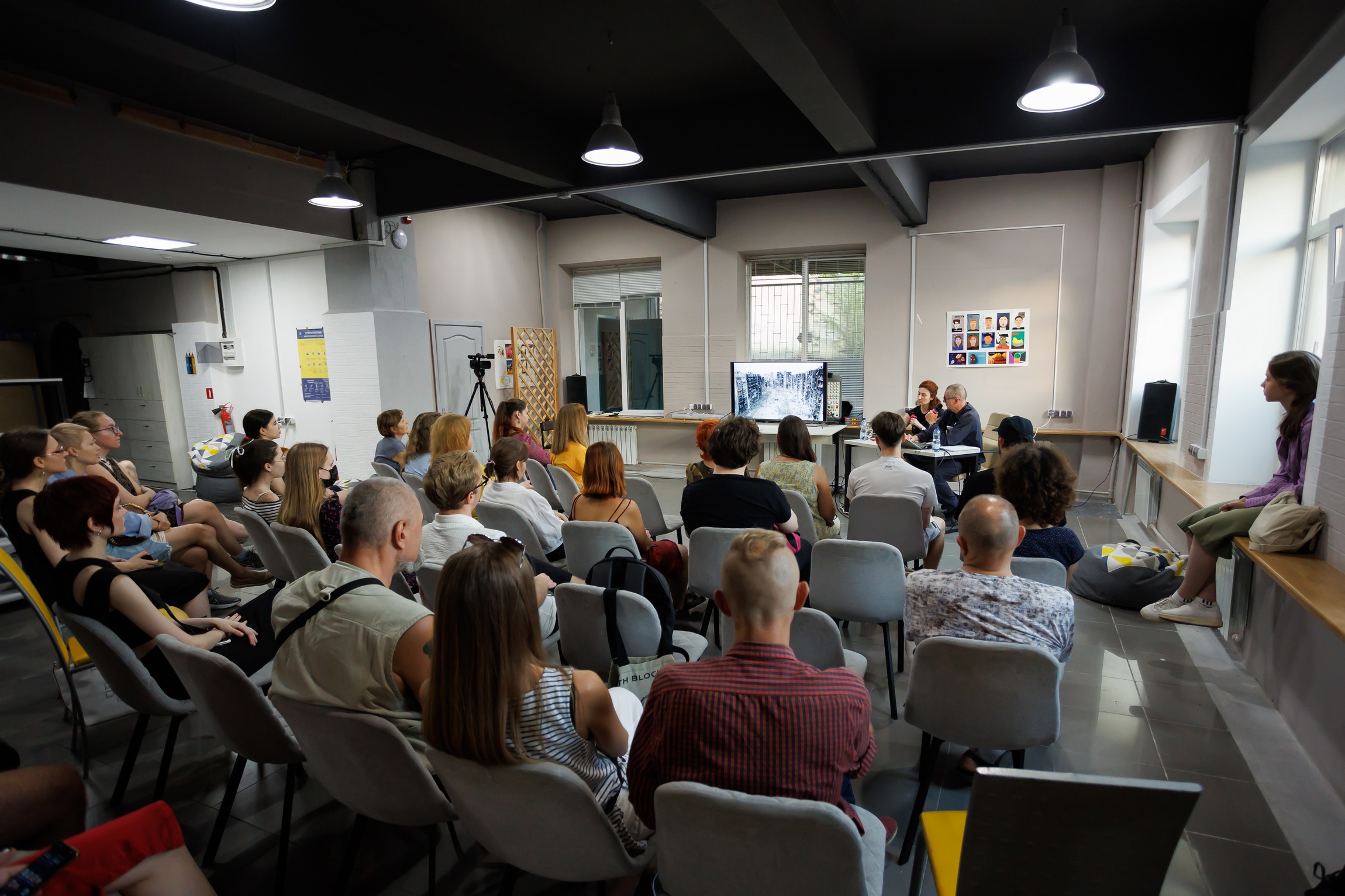

Public lecture “How can the Analog Exhibition Space be combined with the Digital World ?”, 30.08.2024, Kharkiv
